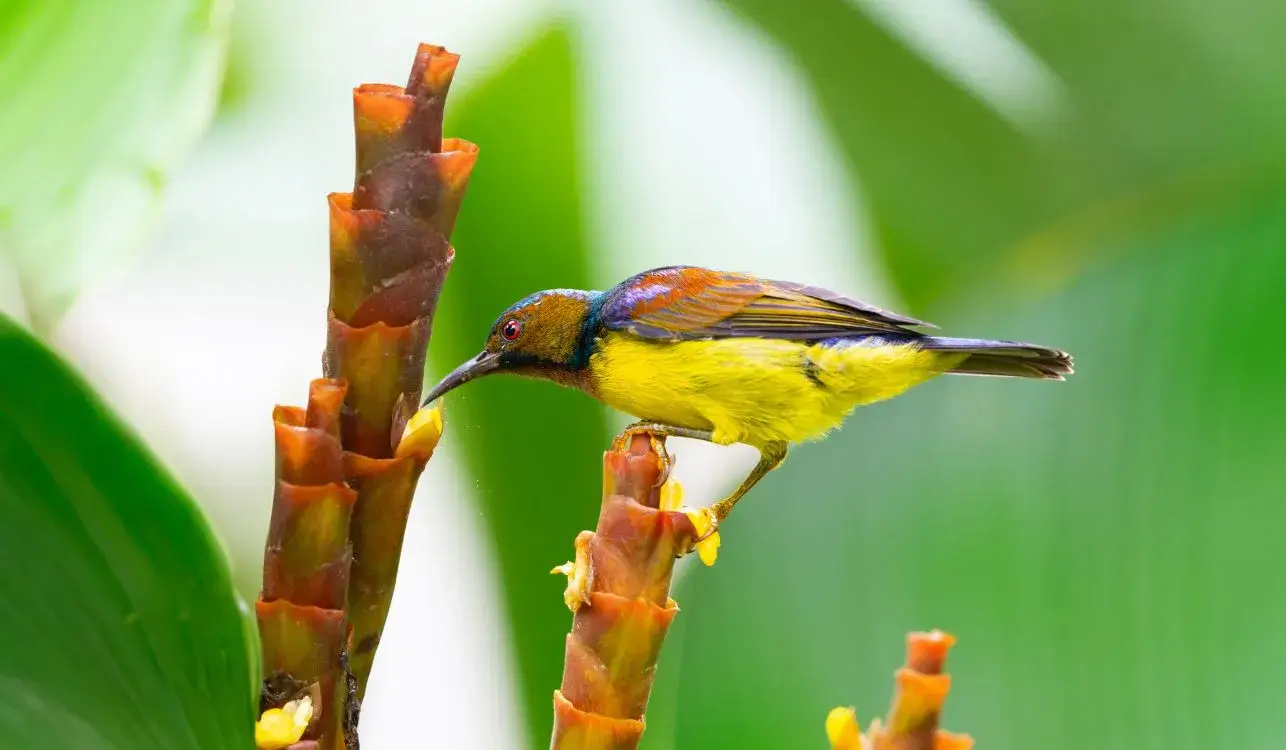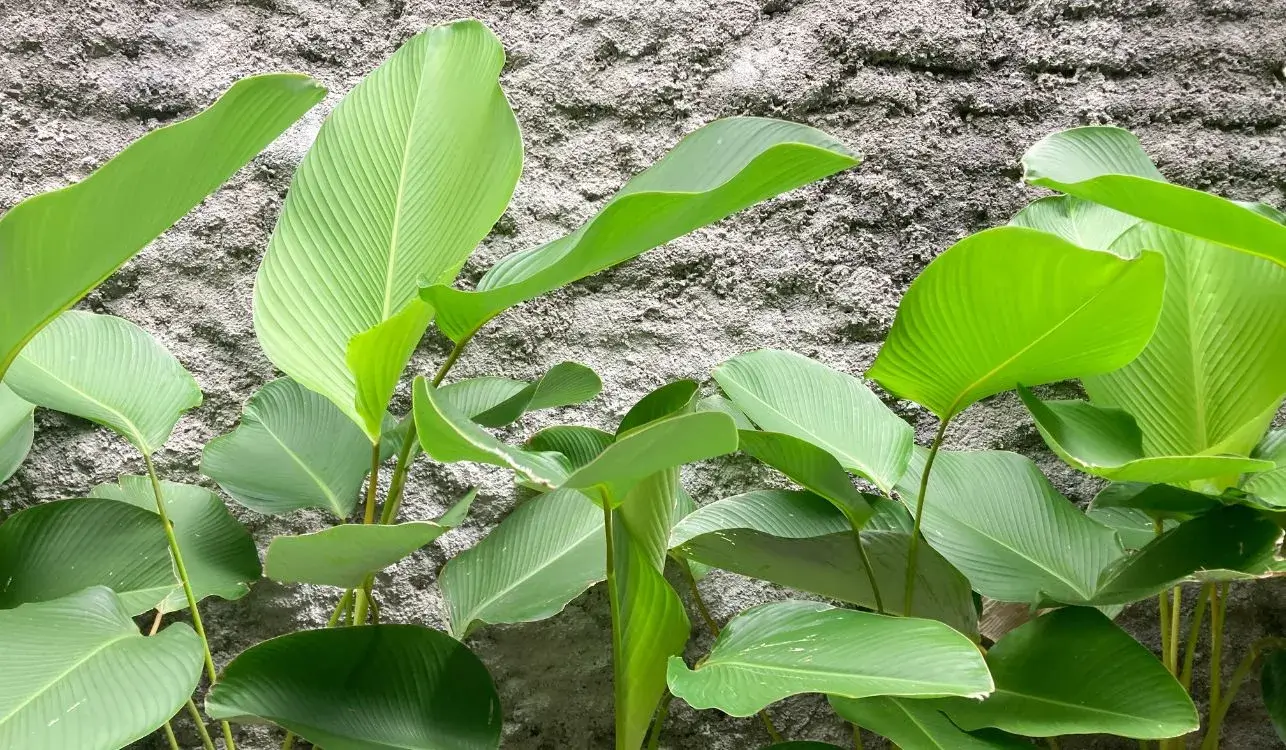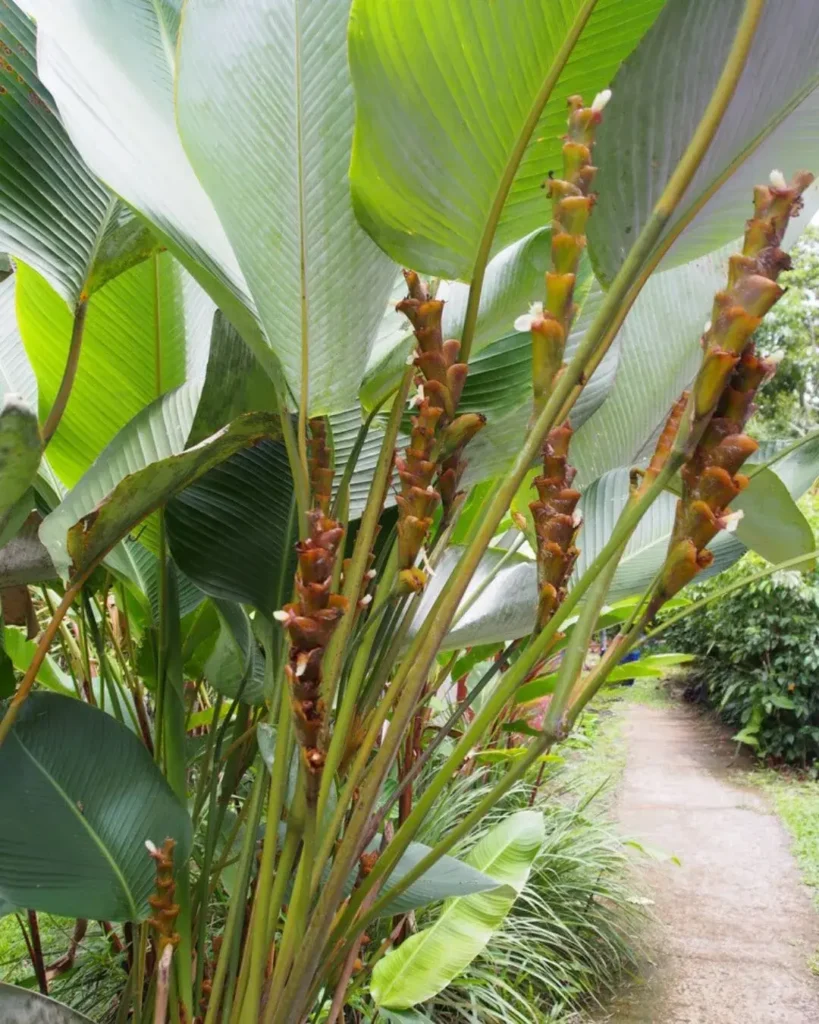The Cigar Calathea (of the species Calathea lutea) is a perennial, herbaceous, rhizomatous plant that stands out for its large leaves with a tropical appeal and elegant movement. Belonging to the same family as ‘prayer plants’, the Cigar Calathea is distinguished by its substantial size when compared to its counterparts. It is native to coastal and tropical regions of the Americas, from Mexico to the Brazilian Amazon, where it primarily grows along rivers, in marshy vegetation, on the edge of the forest, or in areas with natural clearings formed by the occasional fall of a large tree.

The Calathea lutea is a lush evergreen plant that grows from a strong underground rhizome and forms dense clumps measuring 2 to 4 meters (6.5 to 13 feet) in height. What appears to be its stems are actually the long, strong petioles of the leaves, covered by overlapping leaf sheaths. Its leaves are huge and broad, light and vibrant green, with an ovate to elliptical shape, and they can be acuminate, rounded, or obtuse. On the underside of the leaves (abaxial), there is a thick, waxy, powdery layer that gives this side of the leaves a beautiful silvery color. Like other plants in the Marantaceae family, the Calathea lutea also exhibits the typical “praying” movement with its leaves. In the morning, they tilt to have a more horizontal and relaxed appearance, and at night, they close in a more vertical position, revealing the lower side.
The Calathea lutea never fails to impress when it blooms, which can happen at any time of the year but is more frequent during the rainy season. Its floral scape emerges from the leaf sheath and ends in a tall, spike-like inflorescence, measuring 10 to 30 cm (4 to 12 inches) in length and 3 to 5 cm (1.2 to 2 inches) in diameter. This inflorescence is composed of leathery, overlapping bracts in shades of brown to reddish-brown. The plant’s common names, referencing cigars or cigarettes, allude to the appearance of these inflorescences.
With a long-lasting quality, the inflorescences can be used in floral arrangements and bouquets. Delicate tubular flowers with a short lifespan, about 4 cm (1.6 inches) in length, with pale yellow staminodes and purple petals, emerge among their shiny bracts. They attract bees and nectar-feeding birds like hummingbirds. The ensuing fruits are ovoid capsules containing three seeds each, covered with orange and fleshy arils.
In landscaping, the Cigar Calathea is becoming increasingly popular. It impresses with its ornamental effect, primarily due to the arrangement of its large leaves, especially the silver underside. It adds a tropical and luxurious atmosphere to the garden, as if you were entering a true oasis. For this reason, landscapers are increasingly using this species in mass plantings, as borders along walls, to delineate spaces, or in combination with other tropical plants, always with a stunning effect. Low maintenance, good resistance to pests and diseases, and rapid growth – the Cigar Calathea only requires occasional cleaning to remove dead leaves and fertilization every 3 to 4 months.

Apart from its ornamental beauty, the Calathea lutea has surprising uses. Its leaves, waterproof due to the waxy layer on the underside, are locally used to wrap cooked and raw foods, as well as the typical “tamales” in Mexican cuisine. When dried, they are also used in basket making and as a cover for construction. A remarkable aspect of the Calathea lutea is the production of high-quality wax, comparable to carnauba wax extracted from the leaves of the Copernicia prunifera palm.
To ensure healthy growth, the Cigar Calathea requires ample light. As a rule, it thrives in semi-shaded areas that receive abundant filtered light through tree leaves, for example. In subtropical or high-altitude areas with milder climates, it can even be cultivated in full sun, provided that irrigation is always available. In cold locations subject to frost and temperatures below 16°C, it’s advisable to protect it as it cannot tolerate these extreme conditions. In this case, container gardening can be interesting as you can bring the plant to protected, well-lit areas during the harsh winter. If necessary, prune the frost-damaged aerial parts and preserve the rhizomes in a protected environment or under a tarp until they can safely sprout in the spring.
Regarding soil, this Maranta appreciates those rich in organic matter, slightly acidic, well-draining, and airy. It prefers constant humidity, so it’s essential to establish a proper watering schedule or an irrigation system, or consider naturally moist areas of the ground for planting. Fertilize it with slow-release products or organic compost to maintain its vigor and the beauty of its leaves. Like other plants in the Marantaceae family, it is sensitive to calcareous, chlorinated, or fluoridated water, so it’s best to use rainwater or water sources free from these substances.
High relative humidity is crucial for the full development of the Calathea lutea. Therefore, avoid cultivating it in dry places subject to air conditioning and supplement the air humidity with regular misting. Alternatively, you can grow it with other plants that transpire a lot, such as ferns, or in humid greenhouses. Its propagation is easy and can be done through division of clumps, rhizomes, or seeds.

